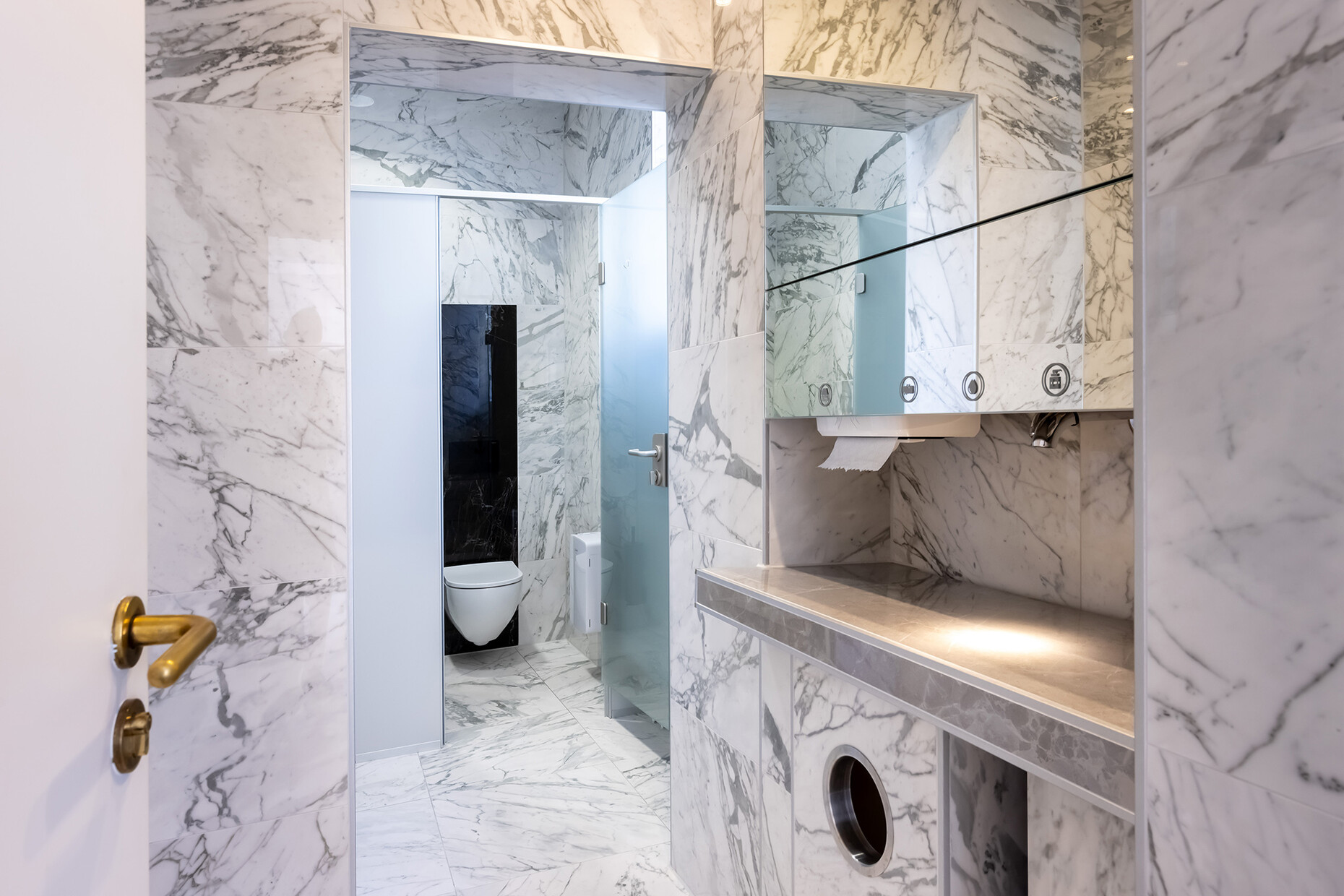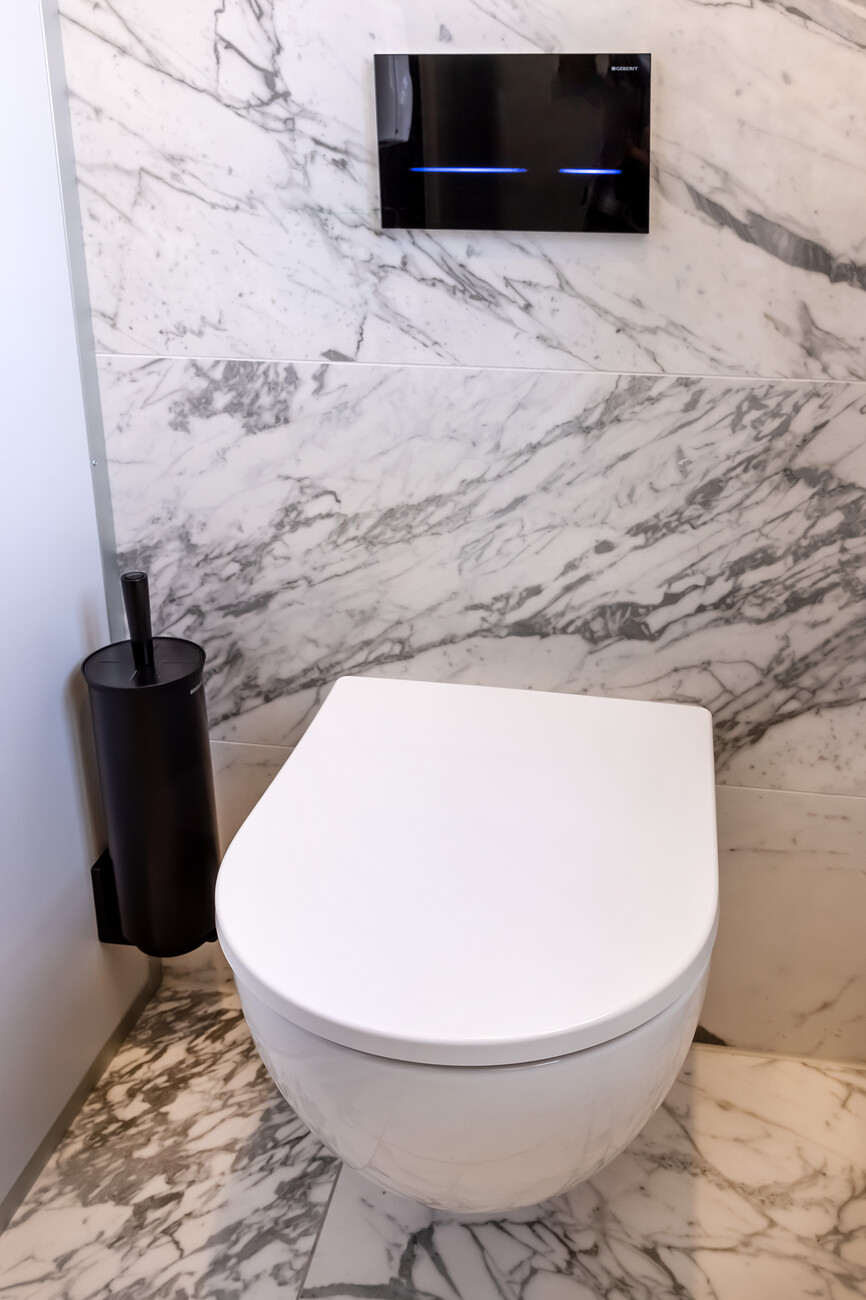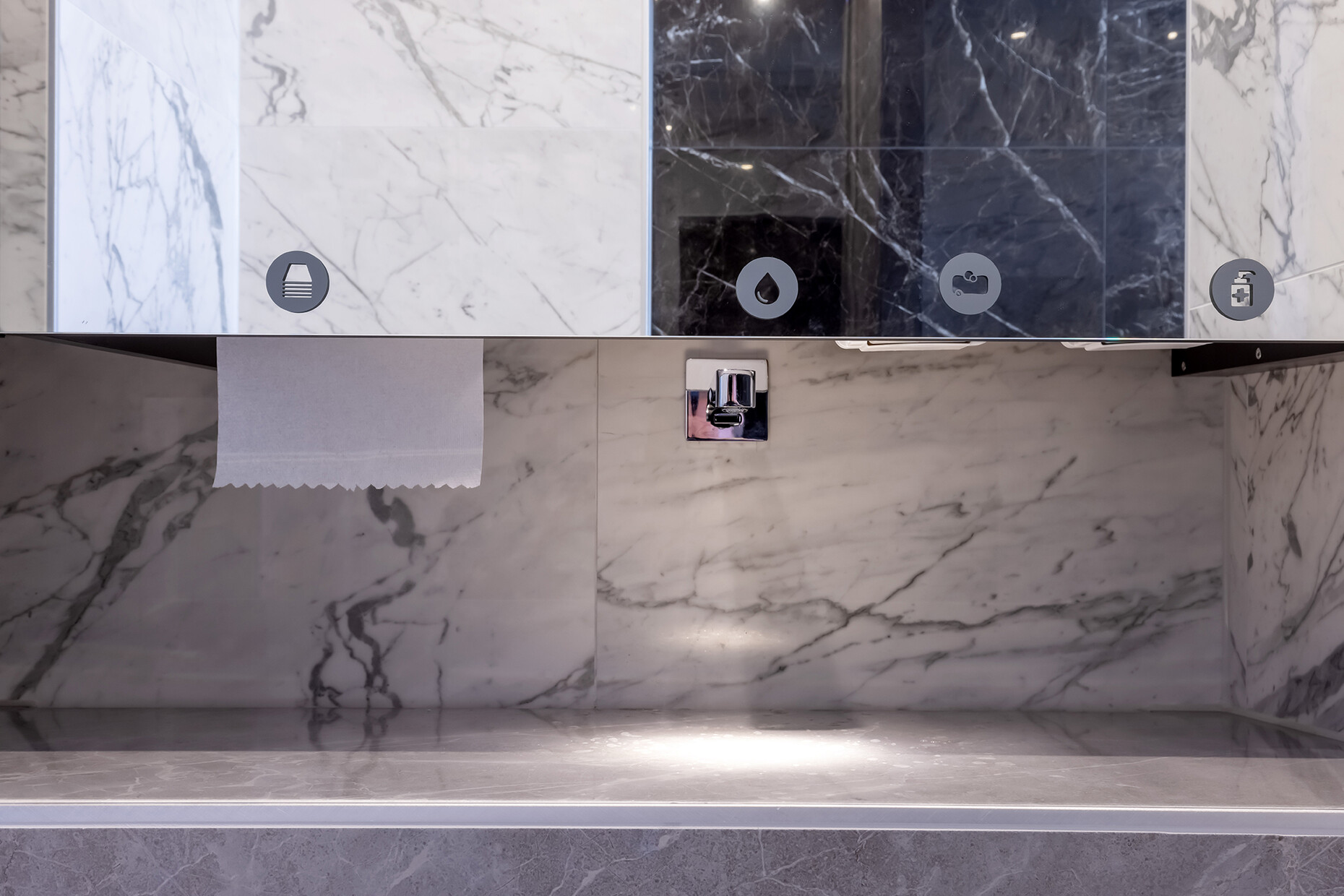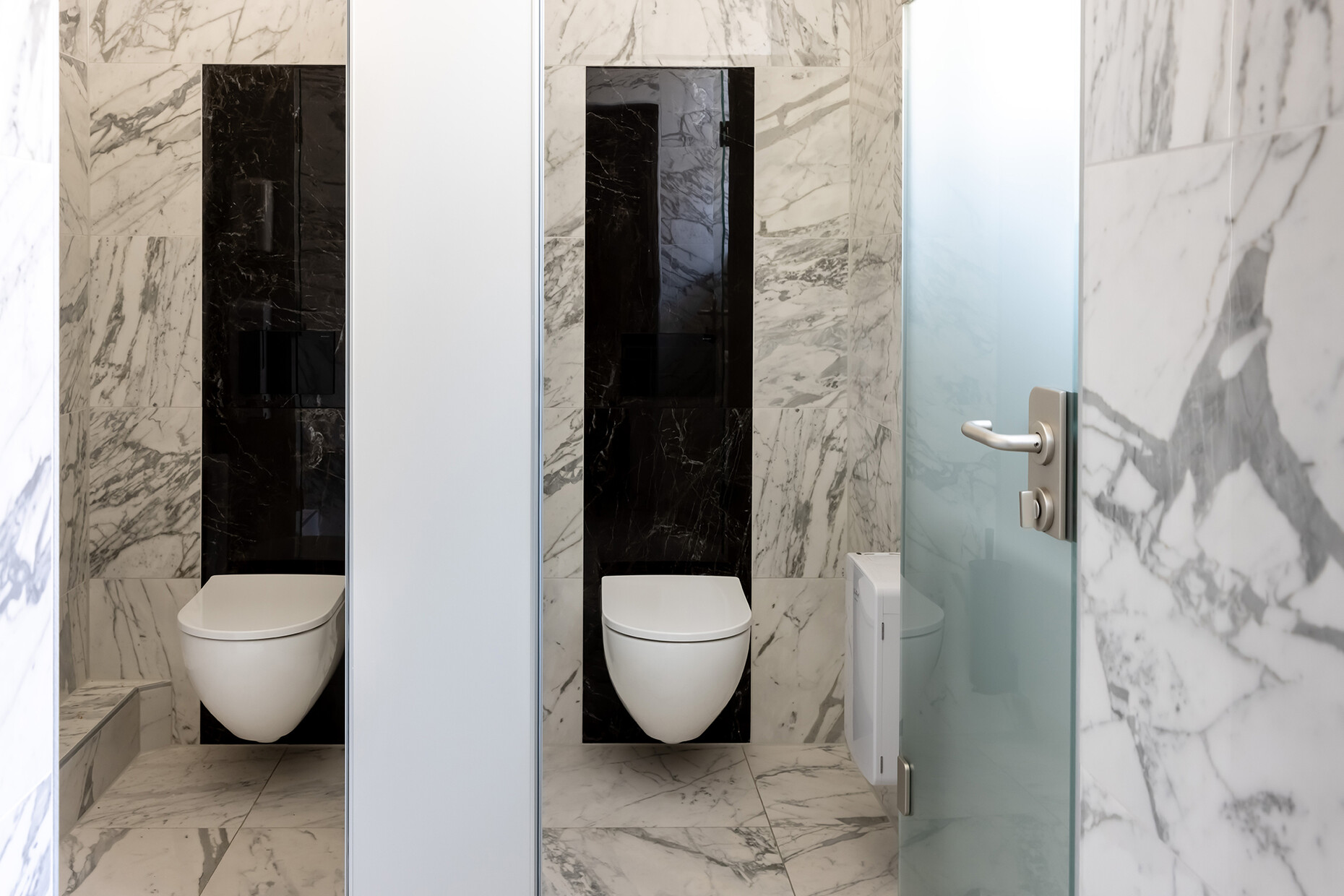Constructive minimalism
In 2025, Chemnitz will be the Capital of Culture. This will also have an impact on the city's cultural institutions, which will soon be receiving visitors from all over Europe – such as the opera house designed by Richard Möbius, which was completed in 1909 and, together with the King Albert Museum and St. Peter's Church, is one of the city's most beautiful architectural ensembles. After being destroyed in World War II, the building was rebuilt between 1947 and 1951, and was again extensively renovated between 1988 and 1992. It is now one of the most modern venues in Europe. Due to a longer break, the 15 sanitary rooms in the building have now also been brought up to the latest standards and have been fitted with contactless sanitary installations and ceramics from Geberit. In doing so, the theater management is taking into account the fact that over 70,000 guests visit the opera house every year. Therefore, it was not only a timeless design that was decisive for the product selection, but also factors such as durability and ease of maintenance combined with reliable spare parts availability and good customer service.
The new systems have now been in operation since February 2021. Increased hygiene awareness also played a role: "We also carried out an all-round technical renewal and designed the facilities to be 100 percent contactless and touch-free," says Raj Ullrich, technical director of the opera house, who is responsible for planning the sanitary facilities. The toilets therefore have a touchless flush and an integrated odor extraction system. The actuator plate installed was the "Sigma80" model from Geberit, whose simple black glass ceramic surface blends elegantly into the modern overall appearance. The flushing of all WCs and urinals can be programmed and operated by interval control. For the WC ceramics, the choice fell on the "Geberit Acanto" model, whose clear design features rimless, easy-to-clean Rimfree technology. In addition, the seat can be easily removed for cleaning with a flick of the wrist. In addition, there are urinals from the "Preda" model with matching partitions in the men's toilets, which, like the WCs, have a touch-free flush actuation system.
The wall-mounted "Brenta" and "Piave" faucets made of chrome-plated brass in the Chemnitz Opera House are also sensor-controlled and completely touch-free. They were mounted barely visible under a mirror in front and are marked for the users by corresponding pictograms. The water flows into the pre-wall behind the washbasins, is collected at the bottom and then flows out again – a special design in which the "CleanLine20" shower channel from Geberit was used. The self-supporting pre-wall installation system "Duofix" from Geberit was used to install the WCs, urinals and washbasins. Raj Ullrich pursued a design concept that was based on the white-grey Carrara marble floors inside the opera house. Its appearance is reflected in the form of a calibrated tile material in the floors, walls and washbasins of the sanitary rooms designed by Raj Ullrich. This is also accompanied by a constructive minimalism that is restrained in relation to the spatial design thanks to the products used and the associated installation technology, as Raj Ullrich explains: "We didn't want a hodgepodge. Ideally, nothing of the technology should be visible, and preferably no sensors either." He succeeded in this, which is why the opera house in Chemnitz is now also ready for the 2025 Year of Culture.
















